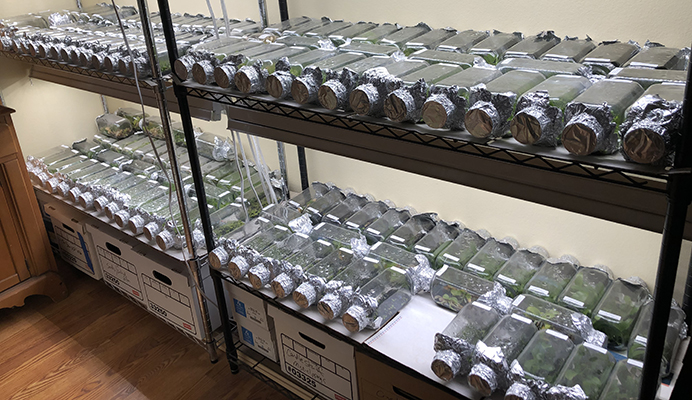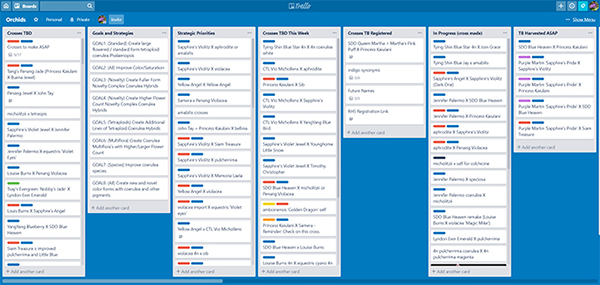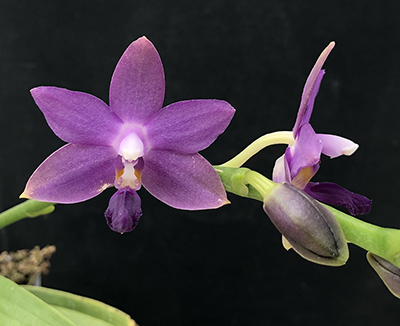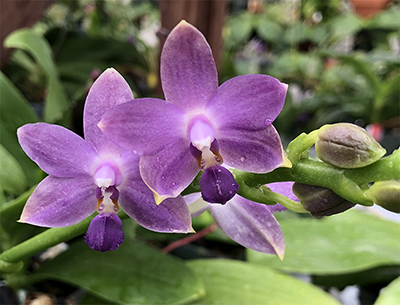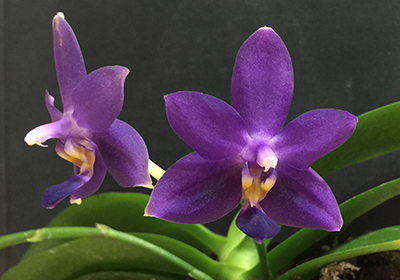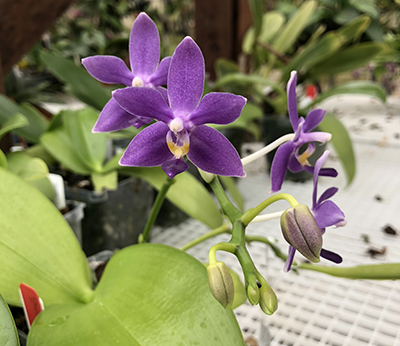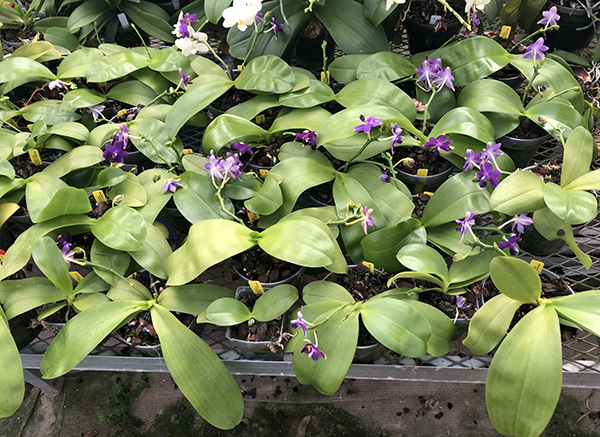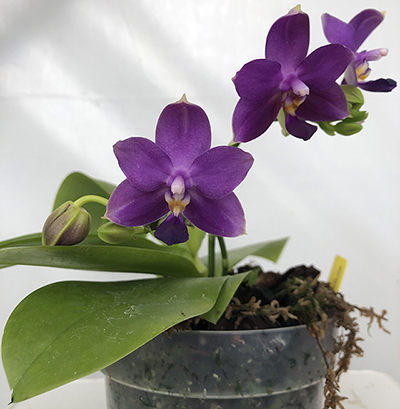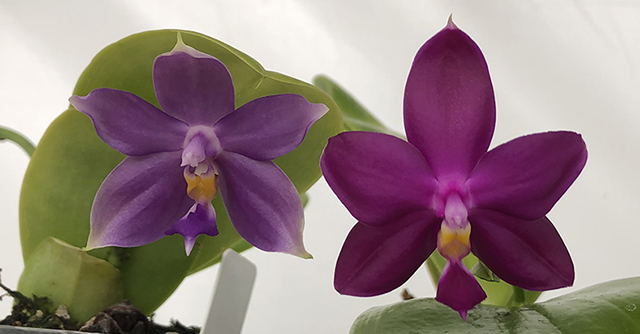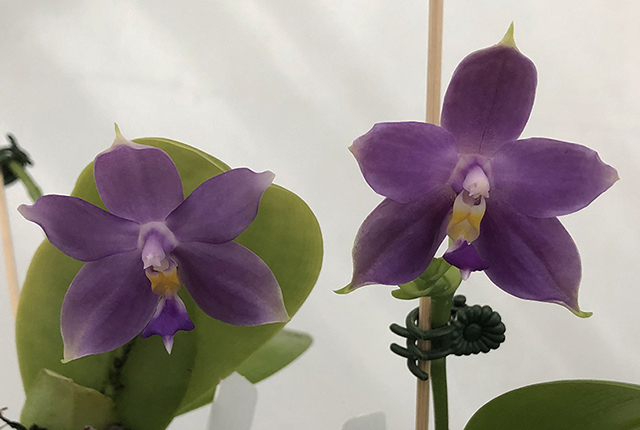
Originally Published: December 24, 2019
I periodically try to write a retrospective article that recounts some of the progress and challenges that have happened over the last few years. It's been a number of years since I have done this, so this article is long overdue. While I started writing this as a mini-article, it ended up taking on a life of it's own and frankly took much longer to write than I was planning. So ironically there is an element of the impact of time going by within this article where the status of things were actually changing over the months as this was being written. So my apologies if this is a bit difficult to follow. I started writing this in mid-Feb 2019 and well, it's almost been a year later. *Gasp*
Looking back on 2018 (and now 2019) turned into a reflection back on the last 16 years of breeding coerulea Phalaenopsis and how little progress I have made over the last few years. 2018 was fraught with the realization that I was horribly behind and the year ended with a desperate attempt to catch up on lab work, getting new crosses done and repotting in the greenhouse. Some years I've produced lots of crosses, some years I've produced none, some years I find myself blooming out all magenta flowers, then some years a really special cross blooms coerulea. On the best of years, a cross blooms out that answers a fundamental question or helps verify a theory about the genetics of the coerulea color form that has eluded me for over a decade now. 2018 and 2019 did have a few successes, so the last couple of years were not a total loss. But it was still a bit disheartening to look back at the last couple of years to see how far behind I had gotten.
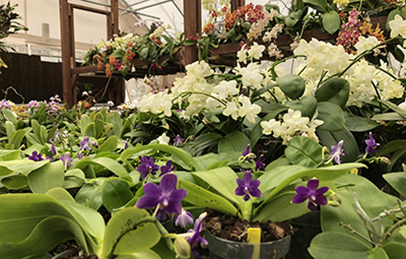
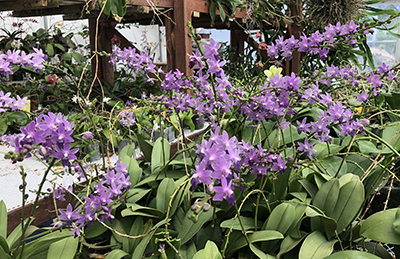
I've had a lot of ups and downs over the years. Some years have been especially bad. The last few years my day job has been so busy that my hybridizing has suffered. I've had some crosses sitting in the lab for over 4 years; flasks covered in dust with orchid seedlings waiting for some attention to restart their growth. It's heart breaking to realize you have lost two or more years of progress and crosses. That realization was a bit of wake-up call and along with more normal work hours has given me the motivation to get caught up and refocus in 2019 and going into 2020.
A couple of things have changed since I first started breeding coeruleas but none has been more impactful than the shear number of different options that we now have with coerulea breeding. When I started there were less than 10 different coerulea species and hybrids in total to work with, and of those, only four were easily obtainable. Now we have access to so many different and unique coerulea Phalaenopsis that it is all too easy to fall into a trap of going toothpick crazy and trying to make every interesting potential cross. That shotgun approach was logistically feasible 10 years ago, now it's just completely impossible to deal with because of high volume of options.
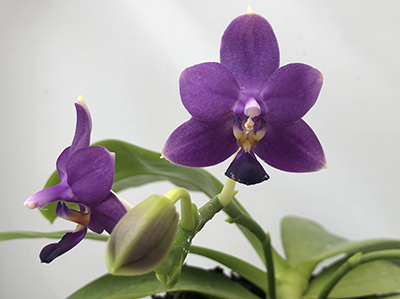
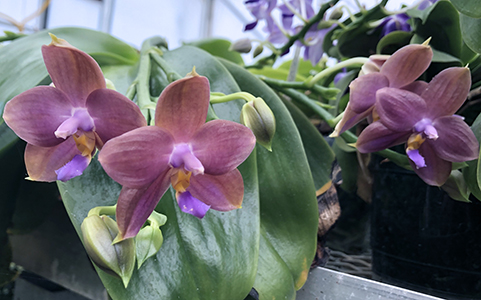
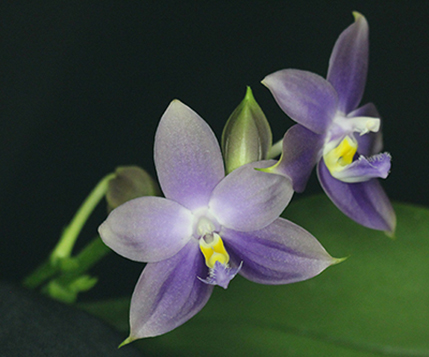
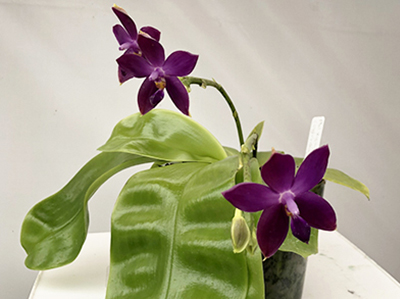
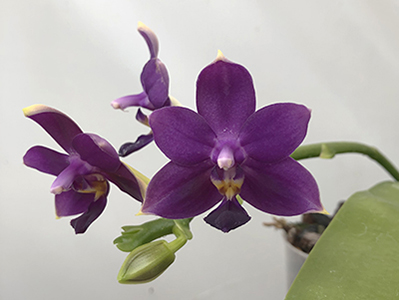

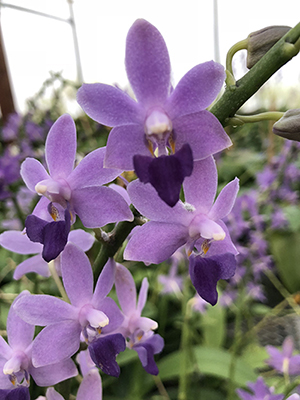
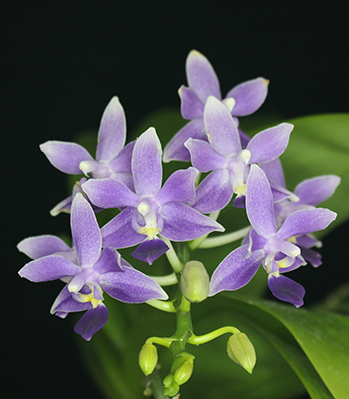
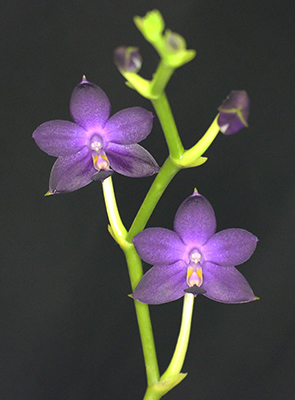
The huge number of options has lead to the ongoing need to prioritize; how does one decide which crosses to make and focus on? So many options, so many potential breeding lines, so many potential new directions.... I have to constantly internalize that my time is very limited, so realistically I can only handle producing 20 to 30 crosses in a year and even with that I risk running out of space in the lab and greenhouse. Granted in a good year I make 200 or more crosses and 10 to 20% of those produce viable seed pods. So in many ways this self limits the number of crosses produced. 2018 turned out to be a bit of an exception; in February 2019 I had almost 60 different crosses actively growing in the lab and at least 40 more viable pods in the greenhouse that needed to be harvested over 2 to 6 months. At my scale it's just not feasible to produce this volume of crosses on a regular basis.
So the questions, "What should I focus on?" and "What is actually important to get done in a given year?" are becoming very necessary to deal with. With so many options on the table, I really struggle with staying focused. There is that word, "focus". Even as I wrote this, I looked at my "Crosses TBD This Week" list and I had 17 crosses listed there. Given I had something like 40 close to mature pods in the greenhouse at that time, I really should not be making 17 more crosses.
What I have found is it becomes more and more important to have clear goals and strategies in order to maintain focus and be able to scope down the potential work. This helps guide the decisions that ultimately allow you to stay focused on the tasks that are going to work towards achieving your goals. I know I'm sounding like some corporate "motivational" speaker right now. But I've found myself needing to apply some of these thought processes and work habits to my own hybridizing program. With coerulea breeding there have been so many questions that needed to be answered to really know what path would work to achieve any specific goal. In many cases the only way to answer those questions was to make lots of different crosses. So the potential permutations and total volume quickly became unrealistic to sustain. The only feasible approach is to stay focused and constantly reduce the scope of what I'm going to try to get done in a give year. The hardest part of all of this is my own breeding program has produced so many different lines of breeding that I actually can't continue moving everything I have created forward. It's like having 4 children and having to decided which 2 you are going to send to college. No one wants to make that decision.
So I keep going back to my goals... My high level goal continues to be working towards producing larger, fuller form coeruleas with higher flower count with an end goal of producing a tetraploid standard form coerulea Phalaenopsis. I would like to think I'm closer to making a big improvement in flower size, but so far every attempt to introduce standard form phal characteristics has resulted in failure. I know much more now than I knew even five years ago. New learning's keep surfacing every year; based on new results in 2017 and 2018 I have been forced to yet again rethink the approach for crosses that would allow me to hybridize with something as simple as Phal. aphrodite. So the high level goals stay the same, but unfortunately the strategy and tactics to achieve them continues to change.
Part of being able to stay focused, making sense of the data I have and being able to weed through all the possible crosses is really about staying organized. I use multiple organization tools day to day. I have started using a online planning program call Trello to keep track of crosses I want to make.
It easily allows me to organize crosses by priority, keep up with crosses that I need to make in the current week and crosses that need attention in the lab. This really helps with staying focused as I can prioritize crosses and use prioritized lists to determine which crosses I'm going to make next. I can then also use that prioritization to determine which crosses in the lab I really need to put more time and energy into. I still use a database to keep track of all my crosses, but so far that database has not been integral to the pre-planning stages. In the future I still may develop a module for my database that facilitates cross planning, but tools I am currently using work as they are so it's a lower priority. Prior to ever putting anything in Trello I often work through multi-generation lines of breeding on paper that are related to different strategies that I believe will help achieve specific breeding goals. So my workflow has become this:
-
Identify individual goals and work through the blockers for achieving that goal.
-
Plan out crosses and multi-generation lines of breeding on "paper". (In my case digital paper, I use a program called Evernote so that I can have the information on multiple devises and I'm writing this article in it right now.)
-
Block out strategic priorities and individual crosses that need to be made in Trello.
-
Constantly prioritize the crosses to be made and maintain a consolidated list of what crosses need to be made next.
-
Record crosses that are made in my hand written Hybridizers Notebook.
-
Create database entries in My Orchid Vault (MOV) once a cross is harvested and goes into the lab. From that point forward all of the record keeping for a given cross goes into MOV.
Looking forward into 2020, my goals really have changed very little from years past. There have been minor tweaks and refinements. My high level primary goals are currently as follows:
-
Work towards creating large flowered (standard form) tetraploid coerulea Phalaenopsis.
-
Continue to improve the color and saturation of coerulea Phalaenopsis.
-
Create fuller form novelty complex coerulea hybrids with increased size.
-
Create higher flower count novelty complex coerulea hybrids.
-
Create additional tetraploid coerulea hybrids.
-
Create coerulea multiflora's (pot plants) with larger and higher flower count.
-
Continue to line breed and improve coerulea species.
-
Create new and novel color forms with coerulea and other color pigments.
This is still a lot and frankly covers too many areas to maintain any real focus. Often multiple goals apply to the same lines of breeding which further complicates the potential strategies and tactics needed to reach these outcomes. Never the less, these are still all goals that are part of the foundation of my breeding program.
No retrospective is complete without looking at what was actually accomplished during that period. During the last couple of years I got so far behind on labwork that I did not have many new crosses blooming out from 2017 to 2018. I only had 5 or 6 new crosses bloom out during those two years and only 3 were actually coerulea. Luckily one cross ended up adding more information to the list of important learning's that will help with future coerulea hybridizing.
Sapphire's Violet Sherbet (Kenneth Schubert X Sapphire's Violitz)
was what I considered to be long shot cross. In this cross, you have standard coerulea violacea, coerulea pulcherrima and indigo violacea. Traditionally it has been impossible to produce coeruleas out of any crosses where either coeruelea violacea and/or coerulea pulcherrima were crossed with an indigo violacea. The mutation that causes the coerulea color form is different in these two groups and has always resulted in the mutation being fixed and 100% magenta/pink flowers produced. So I basically had low expectations for this cross, but it turned out to be ground breaking.
The first couple of seedlings bloomed out dark magenta and I assumed the cross was going to be a failure. About 6 months after the first seedlings bloomed, the first coeruleas started flowering and I realized that this cross was going to produce some really interesting color forms. There were two breakthroughs with this cross:
One: This was the first time a cross that included standard violacea, pulcherrima coerulea and indigo violacea has produced a coerulea form flower. So basically there was something different about this cross that kept the mutation in place that blocks the production of the pink and magenta color pigments. (Anthocyanin's A and B)
Two: It produced 50% standard color form (magenta) and 50% coerulea color form. It's always a good day when I start to see this type of result, it means the color inheritance in the cross is now following a pattern consistent with standard Mendelian genetics. This greatly increases predictability when making hybrids if you can rely on that standard inheritance model. Most of the time, this is not the case with coerulea hybrids.
So Sapphire's Violet Sherbet was a great data point and validation for some of the work I've been doing to work through techniques to improve the stability and reliability of coerulea breeding.
SDO Blue Heaven (Louise Burns X violacea)
was basically what was expected from this cross. This is 3rd generation line breeding continuing to go back to indigo violacea to increase flower size and color. Some of the resulting seedlings had extremely saturated color. These seem to be very compact plants and as was expected, a lower flower count than Louise Burns. These plants are in bloom for 7 to 8 months out of the year. I feel like this cross has gone about as far as it makes sense to go breeding back to violacea, but it should be useful going forward in other crosses.
Sapphire's Violet Jewel (Sapphire's Little Steve X Sapphire's Violitz)
is another cross that mostly produced what was expected. I was hoping that Sapphire's Violitz would have helped improve the form more than it did. Instead the form is about the same as Equalacea, but with larger flowers and strong vigorous plants. It's technically an improvement on some levels over Sapphire's Little Steve, but it really brought the cross back to being like Equalacea. It probably has some uses working towards multi-flora crosses, but really was not a significant improvement of any kind other than having some new genetics in the cross with Tzu Chiang Tetralitz in the background. That alone may make this cross more useful for future hybridizing.
Louis Burns 4n (Equalacea 4n x violacea 4n):
I also produced a lovely tetraploid strain of P. Louis Burns produced from one of my tetraploid Equalaceas and a tetraploid indigo violacea. I'm currently growing out a large batch of these with hopes of being able to get them to AOS judging. The next generation of tetraploid breeding from this strain is currently in the lab. These are extremely vigorous plants, so I'm excited to see where this is going to go.
Equestris var cyanochilus line breeding:
I have been slowly working on trying to improve the color saturation in the sepals and petals of equestris var cyanochilus. This has not be a really high priority project for me, so I've just been fitting in crosses as I have time. This year I bloomed out a new 3rd generation cross that is showing some incremental progress and suggests that eventually we can get to a fully saturated coerulea equestris.
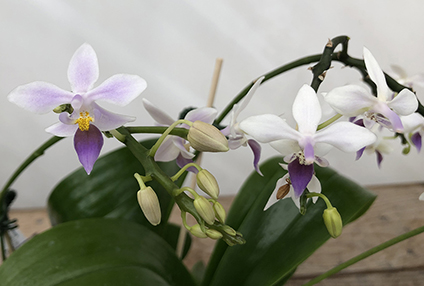
I took these photos with my phone, so the color is not very accurate. In real life this flower is more violet and not as pink as it appears in the photo. But you can see the improvement in color saturation as compared to equestris 'Violet Eyes'.
2019 has been a little light on new hybrids blooming out, but with the high volume of crosses going into the lab and coming out of the lab right now; 2020 and beyond should be really great years with lots of progress.
But there has been one really exciting development this year... I set out to remake George Vasquez and hopefully create a coerulea form many years ago. While technically it's not a true George Vasquez, my cross SDO Royal Dragon (Fintje Kunriawati x violacea) has started blooming out some coeruleas. This cross is |LS|(violacea X pulchra) X violacea|RS|. The original Luedde-violacea's were made with pulchra but also likely had some bellina in them. So this cross is not exactly the same. But it's still great to finally have this line of breeding in coerulea form.
At some point I'm going to have to go back and try to reproduce a coerulea cross that has the same background as the Luedde-violaceas that have been the foundation of many of our novelty crosses. That is going to be a whole different challenge.
Meanwhile I have lots of new crosses in the greenhouse and the lab. Let's see if I can stay "focused" until that new batch of crosses starts blooming out and I have even more options to choose from. ? It may be time to build a new greenhouse.
Have a happy holiday season and happy new year. Looking forward to what 2020 will bring.
All the best, Rob

